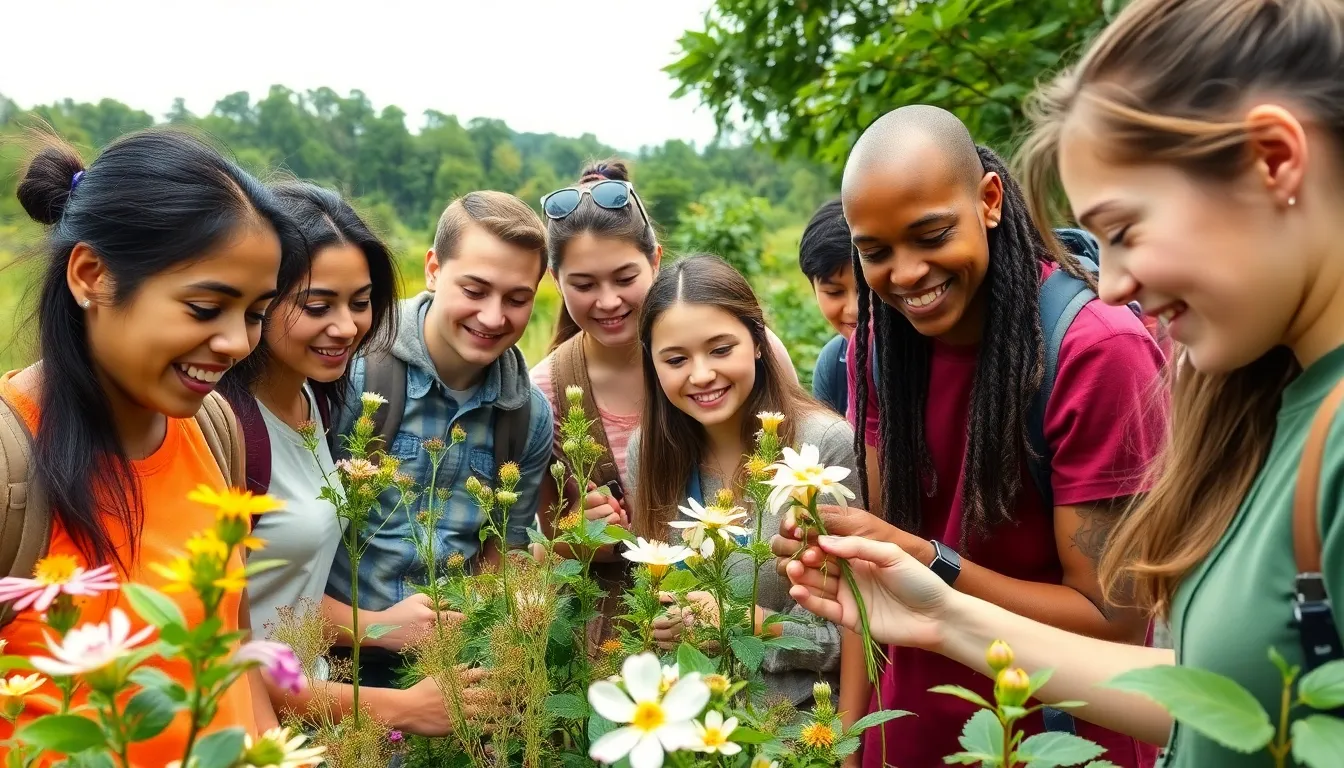Ever looked at a plant and thought, “Wow, you’re just sitting there, living your best life”? In a botany class, students dive into the fascinating world of flora, uncovering secrets that even the most seasoned plant whisperers might not know. From the majestic oak to the tiniest moss, every leaf and petal has a story to tell, and it’s time to listen.
Botany Class
Botany class offers students a comprehensive understanding of plant biology and their ecosystems. The coursework often includes studying plant anatomy, physiology, and taxonomy. Various methodologies such as field studies and laboratory experiments provide hands-on experience.
Curricula generally cover the major plant groups like flowering plants, ferns, and fungi. This diverse exploration allows students to appreciate plant diversity and its ecological significance. Practical exercises enhance skills in identifying different species and understanding their habitats.
Students observe the vital role plants play in sustaining life on Earth. Many engage in projects that focus on plant conservation and the impact of climate change on flora. Learning about plant reproduction, growth processes, and genetic variation supports academic and research pursuits in botany.
Experiments deepen understanding of plant responses to environmental stimuli. The use of technology, such as microscopy and botanical databases, broadens research capabilities. Interactive sessions foster collaboration among students, encouraging discussion and exploration of botanical topics.
Assessments typically include practical exams, quizzes, and presentations. Through these evaluations, instructors gauge comprehension and application of botanical principles. Overall, botany class cultivates a rich appreciation for plants and their essential contributions to our world.
Curriculum Structure

Botany class features a well-rounded curriculum that combines theoretical knowledge with hands-on experiences. Students delve into various subjects that enhance their understanding of plant life and ecology.
Core Topics Covered
Key subjects include plant anatomy, physiology, and taxonomy. Students study diverse plant groups, exploring flowering plants, ferns, and mosses. Ecology provides insights into plant ecosystems and interactions with other organisms. Genetics highlights plant inheritance and variation. Students also learn about the impact of climate change on flora and examine plant conservation methods. Field studies allow students to observe plants in their natural habitats, solidifying classroom concepts through real-world applications.
Practical Applications
Laboratory experiments enable students to engage with plant biology directly. Experimentation with plant growth conditions cultivates a practical understanding of environmental influences. Conservation projects foster community awareness and responsibility regarding ecological preservation. The use of technology in research projects sharpens analytical skills while enhancing data collection. Assessments focus on student comprehension, encouraging critical thinking about botanical principles. Overall, these applications bridge the gap between theory and practice, preparing students for future pursuits in botany or related fields.
Teaching Methods
Teaching methods in botany classes encompass a mix of traditional techniques and modern innovations. This blend enhances student engagement and solidifies understanding of plant biology and ecosystems.
Traditional vs. Modern Approaches
Traditional approaches emphasize lectures and textbook readings, imparting foundational knowledge about plant anatomy and taxonomy. These methods foster a structured learning environment. Modern approaches introduce experiential learning, incorporating field studies and hands-on laboratory experiments. Students engage directly with plants in their natural environments. This active involvement deepens comprehension and retention of botanical concepts. Instructors often employ project-based learning, addressing real-world issues like climate change and conservation. By integrating both approaches, botany classes cultivate a comprehensive educational experience that prepares students for various pursuits in the field.
Use of Technology in Learning
The integration of technology enhances botany education significantly. Digital tools, including virtual labs and plant identification apps, allow students to explore plant species interactively. Online resources provide access to current research and conservation strategies. Data collection apps enable students to document observations during field studies efficiently. Learning management systems facilitate collaboration and communication among students and educators. Interactive video content enriches lectures, supporting diverse learning styles. As a result, technology enhances research capabilities and encourages student autonomy in botanical studies. The combination of technology with traditional methods creates a dynamic learning environment that fosters deeper understanding and appreciation of plants.
Student Experiences
Botany classes provide unique experiences that foster a deep understanding of plant life. Students engage with various aspects of botany in settings designed to promote learning and exploration.
Classroom Environment
A collaborative atmosphere characterizes the classroom environment in botany classes. Students benefit from interactive discussions that stimulate curiosity about plant biology. Engaging visuals, such as diagrams and videos, enrich lessons on plant anatomy and physiology. Resources like plant samples and laboratory equipment enhance hands-on learning experiences. Class sizes often remain small, allowing for personalized attention from instructors. Field trips to local ecosystems provide real-world context and bring lessons to life.
Engagement and Participation
Student engagement thrives in botany classes, bolstered by diverse teaching methods. Interactive activities, such as group projects and presentations, encourage active participation. Students frequently share their observations during experiments, fostering collective learning. Technology integration, including apps for plant identification, captivates interest and enhances research skills. Motivated by real-world applications, students address pressing environmental issues, such as conservation. These experiences cultivate a sense of community among students, driving collaboration and knowledge-sharing.
Conclusion
Botany classes offer a unique opportunity to explore the intricate world of plants and their vital role in ecosystems. Through a combination of hands-on experiences and theoretical knowledge students gain a comprehensive understanding of plant biology. The engaging teaching methods and collaborative environment foster curiosity and critical thinking, preparing students for future endeavors in botany and related fields.
As they delve into topics like plant conservation and climate change students not only learn about plants but also develop a deeper appreciation for nature. This educational journey cultivates a sense of responsibility towards the environment and inspires the next generation of botanists.




